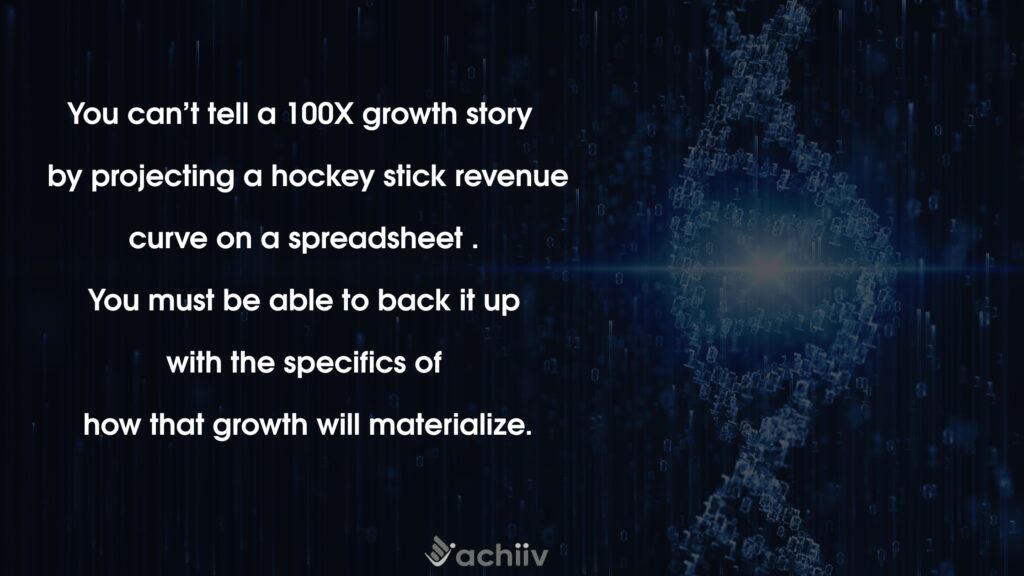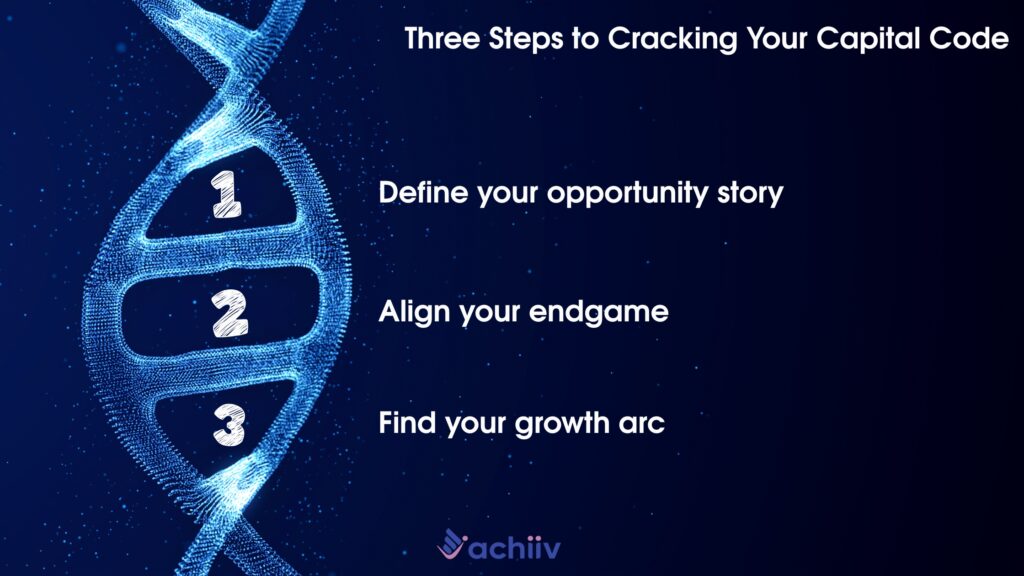Of late, my LinkedIn feed has been stuffed with posts on how to “hack” an intro to VCs. Looking at it, you’d think that all an early stage founder needs is a magical intro to the right VC and they’re set.
This intense pursuit of VC investment makes zero sense to me when I look at the alignment, or rather, the lack of alignment between what a founder is trying to do and what VCs typically fund.
At a deeper level, the real issue is a big gap in how founders develop their funding roadmap. Many founders seem to think that their funding roadmap consists of three steps:
- Build a great pitch
- Find and pitch to the right investor
- Get check
What happens after step 3, in their view, is presumably some version of “Live happily ever after”.
The tragedy isn’t just that this one-size-fits-all approach isn’t a good fit for you. The real tragedy is that it may actually destroy your chances of building a perfectly solid venture if you’d picked the right-fit capital in the first place. In chasing an illusory rainbow that was never going to be within your reach, you may unknowingly snuff out a perfectly good business under your feet.
Zeroing In On Your Startup’s DNA
Your search for capital is a process of eliminating sources that won’t work for your startup’s DNA. Three characteristics of your startup determine your capital path:
The Opportunity Story
You’re in the startup game because of a specific opportunity: finding a cure for cancer, solving the energy problem, or just making life easier for pharmacists (all from my recent founder interactions). This opportunity story is the single biggest driver of your capital roadmap, because it shapes three big variables investors look at:
- Size of the Prize : If you can’t credibly prove that your market is in the hundreds of millions of dollars at a minimum, you can forget about VC or angel money. But putting a big number on a slide isn’t “proof”. You must be able to provide a bottom-up unit estimate of your market to be credible. For example, be prepared to show that your $2 billion market is made up of 25 million units of your product at $80 a unit.
- Sector: Sector matters greatly for your source of capital. I can’t tell you how many consumer goods or retail startups I talk to that think they can get VC funding. Some sectors are highly favored by VCs, for example, software, AI, healthcare, energy. That’s because there’s some disruption opportunity at play, as well as high near-term growth potential. Most consumer goods companies don’t fit the bill.
- Margins: Related to sector but slightly different is the issue of margins. A high margin business means disproportionately higher profits as the company grows and scales – something investors love. That’s why VC’s love software – the margins are extremely high because once you’ve written the code, there’s theoretically no limit to how much you can sell.

The Founder’s End Game
A big part of your motivation to start your venture is your “why”: bring an innovation to market, solve an annoying problem in your industry, or just explore an exciting idea.
But knowing your “why” isn’t enough – you also need to be clear about what your endgame is. Too many founders I talk to haven’t thought about success beyond “get funded”. You also need to be clear on:
- Your control needs: How much control and autonomy do you want over your startup? Getting equity capital not only means that your ownership stake is diluted – it also means you’ll probably lose control someday to investors. So be very clear on day one how much control you want.
- Your time horizon: How long do you want to be in this game? If you want to hand over the company to your kids, don’t bother with VCs. That money comes with a non-negotiable requirement to exit (sell) the company in a 7-10 year window (“the investor timeframe”).
The Culmination: Your Growth Arc
What brings everything together is the growth arc of your startup. The growth arc determines how fast your company will grow in the investor timeframe. This determines your startup growth category: a 1X, 10X or a 100X startup.
Neighborhood Nice
A 1X company is the typical small business that aims to grow slowly but steadily – e.g., a local retail establishment. It aims for a 5-year revenue goal of $1 – $5 million. If this is you, don’t waste a minute with fundraising. Investors will never bite.
Niche Mastery
Perhaps you’re deep into your industry and have found an opportunity not obvious to others. You’ll grow, but more likely to a revenue level of $10-$20 million in the investor timeframe. You’re a 10X business that may be attractive to a small subset of investors, like some angels. But chasing VC is a waste of time.
Market Domination
A true 100X business aims to dominate a massive market ripe for change, like Uber or AirBnB. These startups can credibly connect the dots on how they’ll grow from no revenues to a behemoth dominating huge markets in relatively short order, with $100 million + revenues in the investor timeframe.
These are the only true VC-fundable startups. But you can’t tell a 100X growth story just by projecting a hockey stick revenue curve on a spreadsheet . You must be able to back it up with the specifics of when, what and how that growth will materialize.

Finding the Right Source of Capital for Your Story
You’ve tested your opportunity, clarified your end game and credibly defined your growth arc. There’s one more step left: defining your current stage. It’s almost impossible to raise outside money in the earliest stages of your startup. You’ll need clear evidence of progress and traction. With that, you’re ready to craft your capital roadmap:
The 1X Path: Do It Yourself
With a 1X business, your most critical step is finding the fastest path to self-sufficiency. How can you minimize your outlay and maximize revenue to generate cash as quickly as possible?
Focus on:
- Bootstrapping: e.g., provide services that tide over your immediate cash gap
- Advance customer funding: Define a business model that accelerates cash inflow, e.g., getting cash for sales upfront, offering standardized products that are easy to produce and deliver
- Supplemental non-dilutive funding: This is probably the only type of startup where it makes sense to pursue small ticket non-dilutive funding like micro-grants
The 10X Path: Selective Risk Capital
In this case, focus all your efforts on achieving signals of traction / product market fit with as little outside capital as possible. Then target a selective raise from mission-aligned investors, angel investors and/or sources like crowdfunding (depending on sector and amount). Ideally, you’ll be able to achieve cash sufficiency and/or an exit with just a single, well-planned raise and great execution against a thoughtful roadmap.
Many angel investors, for example, are becoming increasingly okay with getting even 2-3X returns on their investment in 5-10 year timeframes. If you can craft a compelling story backed by evidence that you can deliver quickly to a hungry market, you may be able to access risk capital and still find your way to a positive outcome.
True VC Funding Candidates: The 100X Aspirant
Focus on VC funding only if you can prove that a big, hungry market is waiting, and you have credible plans to grow your business to $100+ million in 5-10 years. There’s plenty of material available on how to do that.
Even in that situation, you may be better off acting like a 10X startup, and let the market opportunity and your trajectory guide your path to funding.
Should You Still Build Pitch Decks and Talk to Investors?
So should you still create a pitch deck and pitch it to mentors and investors in your accelerator program?
Yes, absolutely! Regardless of what you’re building, some requirements never change: the need for a strong business model, a compelling value proposition, a credible go-to-market strategy. Expert feedback is the fast track to find and fix those gaps – make use of it!
This process will also help you clarify what type of startup you want to / can aim to build and make the process of finding the right sources of capital that much easier.
So, what’s your endgame? What sources of capital will you stop chasing?







